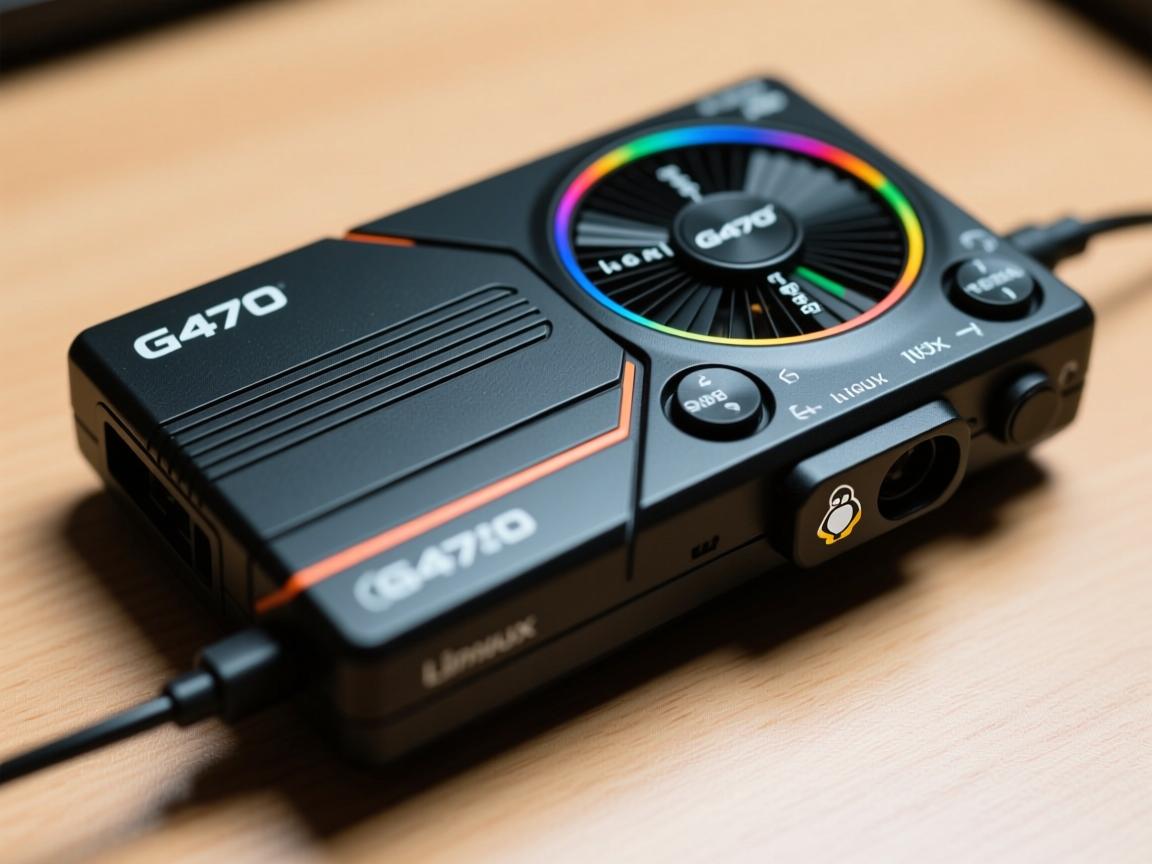为您的联想 G470 (2012 款) 安装 Linux:一份详细指南
如果您手上还有一台 2012 年购买的联想 G470 笔记本电脑,并且觉得它运行现代 Windows 系统(如 Windows 10/11)有些吃力,或者您想尝试更高效、更安全的操作系统,那么安装 Linux 是一个非常值得考虑的方案,Linux 以其轻量、灵活、安全和强大的开源生态,能够为这台“老兵”注入新的活力,让它继续胜任日常办公、网页浏览、编程学习甚至轻度娱乐等任务,本指南将详细介绍在 G470 上安装 Linux 的步骤、注意事项以及优化建议。
重要前提与准备工作
-
了解您的硬件 (关键!):
- 处理器: 2012 款 G470 通常搭载 Intel 第二代酷睿 i3/i5/i7 处理器(Sandy Bridge 或 Ivy Bridge),这些处理器对 Linux 的支持非常成熟。
- 显卡: 这是 最需要关注的兼容点,G470 常见配置是:
- 集成显卡: Intel HD Graphics 3000 (Sandy Bridge) 或 HD Graphics 4000 (Ivy Bridge)。兼容性极佳,开箱即用。
- 独立显卡: 通常搭配入门级的 AMD Radeon HD 6370M/6470M/7450M/7670M 等,这些较老的 AMD GPU 使用
radeon开源驱动支持良好,但性能有限,且可能遇到双显卡切换(Optimus/Hybrid Graphics)问题。建议在 BIOS 中关闭独立显卡(如果选项存在),仅使用 Intel 集成显卡,以获得最佳的兼容性、稳定性和续航,关闭方法通常是在 BIOS 的Configuration或Advanced菜单下寻找Graphics Device或Switchable Graphics选项,设置为UMA Graphics或Integrated Graphics。
- 内存: 建议至少 4GB RAM,如果还是 2GB,强烈建议升级到 4GB 或 8GB(G470 通常有两个插槽,最大支持 8GB DDR3),这对流畅运行现代 Linux 桌面至关重要。
- 硬盘: 原装机械硬盘 (HDD) 速度较慢。强烈建议更换为固态硬盘 (SSD),这是提升老机器速度最有效的手段,SATA 接口的 2.5 英寸 SSD 即可。
- 无线网卡: 原装网卡型号可能多样(如 Broadcom, Atheros, Realtek),大部分 Atheros 和 Realtek 网卡开源驱动支持良好,部分 Broadcom 网卡(如 BCM4313)可能需要额外安装固件或驱动(安装过程中或安装后联网解决),准备好有线网线以备不时之需。
- BIOS 版本: 确保您的 BIOS 已更新到联想官网提供的最新版本(通常在 2013-2014 年左右),这有助于解决潜在的硬件兼容性问题,访问联想支持网站,输入您的具体型号(如 G470AH, G470AL 等)查找驱动和 BIOS 更新。
-
备份重要数据!: 安装操作系统会格式化硬盘(或某个分区)。在开始之前,务必将您硬盘上所有重要的文档、照片、音乐、视频等备份到外部存储设备(如 U 盘、移动硬盘)或云端。 这是一个不可逆的操作,请务必谨慎。
-
选择 Linux 发行版 (Distribution): 针对 G470 的硬件(尤其是如果未升级内存和硬盘),推荐选择 轻量级、稳定、对老硬件支持好 的发行版:
- Linux Mint Xfce / MATE 版: 用户友好,基于 Ubuntu LTS,Xfce/MATE 桌面环境非常轻量,适合老机器。强烈推荐首选。
- Xubuntu: Ubuntu 官方衍生版,使用轻量的 Xfce 桌面环境,同样优秀的选择。
- Lubuntu: Ubuntu 官方衍生版,使用极其轻量的 LXQt 桌面环境,在资源极其有限(如 2GB RAM + HDD)时表现最好,但界面相对简单。
- Ubuntu MATE: 另一个优秀的轻量级选择,MATE 桌面经典易用。
- Debian (with Xfce/LXQt): 以稳定著称,安装时选择非自由固件包,对硬件兼容性更好,安装过程稍复杂于上述发行版。
- 避免: 资源消耗较大的桌面环境如 GNOME Shell (Ubuntu 默认)、KDE Plasma (Kubuntu),除非您已升级到 SSD 和 8GB 内存。
-
下载 Linux 镜像 (ISO): 访问您选择的发行版官方网站(确保来源可靠!),下载适用于 64 位系统 (
amd64或x86_64) 的 ISO 镜像文件,G470 的 CPU 是 64 位的。
-
制作启动 U 盘:
- 准备一个 容量至少 4GB (推荐 8GB 或更大) 的 U 盘。制作过程会清空 U 盘数据!
- 在您当前可用的电脑(Windows 或 macOS)上,使用以下工具之一将下载的 ISO 文件写入 U 盘:
- Rufus (Windows 首选): 免费、开源、易用,选择 U 盘,选择 ISO 文件,分区方案通常选
MBR(BIOS 是 Legacy) 或GPT(UEFI),目标系统类型选BIOS (or UEFI-CSM)以兼容 G470 的 Legacy BIOS,点击“开始”。 - BalenaEtcher (跨平台:Win/macOS/Linux): 更简单直观,选择 ISO,选择 U 盘,点击“Flash!”。
- Ventoy (高级推荐): 一次性制作后,可存放多个 ISO 文件,启动时选择安装哪个,灵活性高。
- Rufus (Windows 首选): 免费、开源、易用,选择 U 盘,选择 ISO 文件,分区方案通常选
-
调整硬盘空间 (仅限双系统用户): 如果您想保留原有的 Windows 系统(Windows 7),实现 Linux 和 Windows 双启动,您需要 在 Windows 中提前为 Linux 分区腾出空间:
- 打开“磁盘管理”(右键“此电脑/计算机”->管理->磁盘管理)。
- 找到您的系统盘(通常是 C:),右键选择“压缩卷”。
- 输入要压缩的空间量(单位为 MB,50GB = 51200MB)。确保压缩后的空间足够安装 Linux 和您的应用数据。
- 点击“压缩”,完成后会看到一块标记为“未分配”的空间。Linux 安装程序将使用这块空间。
安装 Linux 步骤
-
进入 BIOS 设置:
- 关闭 G470 电脑。
- 插入制作好的 Linux 启动 U 盘。
- 开机,在出现联想 Logo 时,快速、连续地按
F2键(或Fn + F2)进入 BIOS Setup。 F2无效,尝试F1,Delete或Enter键,具体按键请参考开机瞬间屏幕底部的提示。
-
配置 BIOS 选项 (重要!):

- 使用方向键导航。
- 禁用安全启动 (Secure Boot): G470 的 BIOS 可能没有 UEFI 或 Secure Boot 选项(它是 Legacy BIOS 机器)。
Security选项卡下有Secure Boot,确保其设置为Disabled。绝大多数 2012 年的笔记本没有 UEFI/Secure Boot。 - 禁用快速启动 (Fast Boot): 在
Boot或Configuration选项卡下,找到Fast Boot,设置为Disabled,这有助于安装程序正确识别硬件。 - 调整启动顺序:
- 转到
Boot选项卡。 - 找到
Boot Mode或类似选项,确保是Legacy Support或Legacy First(不是 UEFI)。 - 找到
Boot Priority Order或Boot Device Priority。 - 使用 或
F5/F6键,将USB HDD或您的 U 盘名称(如USB: SanDisk Cruzer)移动到第一位。
- 转到
- 关闭独立显卡 (强烈建议): 在
Configuration或Advanced菜单下,寻找Graphics Device或Switchable Graphics选项,将其设置为UMA Graphics或Integrated Graphics或Discrete Graphics Off,这能避免双显卡带来的潜在驱动和发热问题。 - 保存并退出: 按
F10键,选择Yes保存 BIOS 设置并重启,电脑将从 U 盘启动。
-
启动 Linux 安装程序:
- 电脑重启后,应该会进入 Linux 发行版的启动菜单(Grub 菜单)。
- 通常选择第一项 “Start Linux Mint / Try Ubuntu / Install Xubuntu” 等(名称取决于发行版)以 “Try” 或 “Live” 模式启动,这非常重要!您可以在不安装的情况下体验系统,并测试硬件兼容性(声音、网络、显示、触摸板等)。
-
测试 Live 环境:
- 进入 Live 桌面后,请务必测试:
- 网络: 尝试连接 WiFi 或有线网络,WiFi 无法工作(尤其是 Broadcom 网卡),可能需要先连接网线,然后在安装过程中或安装后安装驱动。
- 显示: 屏幕分辨率是否正常?有无花屏、闪烁?尝试播放一段视频或打开图片。
- 声音: 播放测试音效或音乐。
- 触摸板和键盘: 是否正常工作?
- USB 端口: 插入 U 盘或鼠标测试。
- 如果一切正常,双击桌面上的 “Install Linux …” 图标开始安装,如果遇到问题(如无线网卡不工作),优先尝试连接网线安装,安装完成后再解决驱动问题。
- 进入 Live 桌面后,请务必测试:
-
运行安装程序:
- 选择语言: 通常默认是英语,选择您需要的语言(如中文简体)。
- 键盘布局: 选择您的键盘布局(如 Chinese 或 English US)。
- 连接网络: 如果检测到网络(有线或无线),建议连接,安装程序可以下载更新和第三方软件(如多媒体解码器、可能的专有驱动)。
- 安装类型 (分区 – 关键步骤!):
- 清除整个磁盘安装 Linux (单系统): 选择 “Erase disk and install Linux” 或类似选项。这将删除硬盘上所有数据! 安装程序会自动分区(通常包含 根分区 和
swap交换分区),最简单,适合只想用 Linux 的用户。 - 与 Windows 共存 (双系统): 选择 “Install Linux alongside Windows Boot Manager” 或类似选项。这是最推荐双系统用户的选择。 安装程序会自动识别之前压缩出来的“未分配”空间,并在此空间内创建 Linux 所需的分区,滑动条可以调整 Linux 和 Windows 分区的大小(但通常建议在 Windows 中提前压缩好)。
- 手动分区 (Something else – 高级): 如果您有特殊需求(如单独设置
/home分区),选择此项,在分区列表中:- 找到标记为
free space或unallocated的空间(即您为 Linux 预留的空间)。 - 选中它,点击 按钮创建分区:
- Swap 分区: 大小通常等于物理内存大小(如 4GB),类型
Logical,位置Beginning,用于swap area。 - 根 () 分区: 使用剩余的大部分空间(40GB+),类型
Primary,挂载点 ,文件系统ext4(推荐)。 - (可选) /home 分区: 如果您希望用户数据独立于系统,可以再创建一个分区,挂载点
/home,文件系统ext4,大小根据您的数据量决定。
- Swap 分区: 大小通常等于物理内存大小(如 4GB),类型
- 注意: 确保 “Device for boot loader installation” 选择的是您硬盘的 整个设备(如
/dev/sda),而不是某个分区(如/dev/sda1),这通常是默认设置。
- 找到标记为
- 清除整个磁盘安装 Linux (单系统): 选择 “Erase disk and install Linux” 或类似选项。这将删除硬盘上所有数据! 安装程序会自动分区(通常包含 根分区 和
- 时区: 在地图上点击您所在位置或手动选择。
- 用户信息:
- 输入您的姓名。
- 计算机名(可自定义)。
- 选择一个用户名(登录用)。
- 设置一个强密码。
- 登录选项: 可以选择自动登录(方便但安全性降低)或要求输入密码登录(推荐)。
- 开始安装: 确认所有设置无误后,点击 “Install Now”,安装程序会提示确认分区操作(警告数据将被擦写),点击 “Continue”。
-
等待安装完成:
- 安装过程会复制文件、安装系统、设置用户等,根据您的硬件(尤其是硬盘速度)和网络状况,可能需要 10 到 30 分钟或更久。
- 安装过程中通常会展示一些发行版特性介绍。
-
安装完成与重启:

- 安装完成后,会提示您重启电脑。
- 务必在提示时拔掉安装 U 盘! 否则可能会再次进入安装程序。
- 点击 “Restart Now”,电脑将重启。
首次启动与基本设置
- 选择操作系统 (仅限双系统): 重启后,您会看到一个启动菜单(GRUB),默认会启动 Linux,使用方向键可以选择启动 Linux 或 Windows。
- 登录系统: 输入您在安装过程中设置的用户名和密码登录。
- 连接网络: 确保网络连接正常(有线或无线)。
- 更新系统 (重要!): 这是保证系统安全和稳定的第一步,打开“终端” (Terminal),输入以下命令:
sudo apt update && sudo apt upgrade
(适用于基于 Debian/Ubuntu 的发行版如 Mint, Xubuntu, Lubuntu),输入密码后,按
Y确认安装更新,这可能需要一些时间。 - 安装额外驱动 (如果需要):
- 无线网卡驱动: 如果在 Live 环境或安装后 WiFi 不可用:
- 优先连接网线。
- 打开“驱动程序管理器” (Driver Manager) 或 “附加驱动” (Additional Drivers) 工具(名称因发行版而异,通常在系统设置或菜单中搜索),它会扫描并列出可用的专有驱动(如 Broadcom STA 驱动),选择推荐的驱动,点击“应用更改”进行安装,安装后重启。
- 如果工具里没有,可能需要手动安装,对于 Broadcom,常见命令如
sudo apt install bcmwl-kernel-source,请根据您的具体网卡型号搜索解决方案。
- 显卡驱动: 如果您遵循建议禁用了独显,使用的是 Intel 集显,那么开源驱动
i915通常已是最佳且自动启用,无需额外操作,如果启用了 AMD 独显,开源radeon驱动通常也足够,除非有特殊需求,否则不建议安装较老的 AMD 专有驱动 (fglrx),因为它已停止支持且兼容性差。
- 无线网卡驱动: 如果在 Live 环境或安装后 WiFi 不可用:
- 安装必要软件: 使用发行版自带的软件中心(如 Mint 的 Software Manager, Ubuntu 的 Ubuntu Software)搜索并安装您需要的应用程序,如浏览器(Firefox, Chrome)、办公套件(LibreOffice)、媒体播放器(VLC)等。
- 探索与优化:
- 电源管理: 安装
tlp可以优化电池续航(安装:sudo apt install tlp tlp-rdw,安装后通常自动启用)。 - 触摸板: 设置里通常有触摸板选项,可以调整灵敏度、滚动方向、禁用触摸板打字时等。
- 主题与外观: 根据喜好调整桌面主题、图标、字体大小等。
- 电源管理: 安装
常见问题与解决建议
- 安装后无法启动 (黑屏/卡 Logo): 最常见原因是显卡驱动问题。
- 尝试在 GRUB 菜单选择 Linux 条目时,按
e键编辑启动参数,在linux开头的行末尾,quiet splash后面添加nomodeset(空格分隔),然后按F10或Ctrl+X启动,如果能进入系统,说明是显卡驱动初始化问题,需要安装正确的驱动(如前所述,建议优先禁用独显)。 - 检查 BIOS 中是否错误启用了 UEFI 选项(G470 应始终使用 Legacy BIOS 模式)。
- 尝试在 GRUB 菜单选择 Linux 条目时,按
- WiFi 无法工作: 如前所述,优先连网线,使用驱动管理器或手动安装驱动,确保 BIOS 中无线设备未被禁用。
- 声音问题: 检查系统设置中的声音输出设备是否选对,尝试安装
pavucontrol(sudo apt install pavucontrol) 进行更细致的控制,老声卡可能需要特定内核参数,但 G470 通常没问题。 - 双显卡问题: 再次强调,在 BIOS 中关闭独显是最省心的方案。 如果必须使用,较老的 Optimus 方案可能需要
Bumblebee(已过时且不再积极维护)或nvidia-prime(对老卡支持有限),对于 AMD 独显,开源radeon驱动配合 DRI_PRIME 环境变量可能可行,但复杂且可能不稳定。 - 性能慢: 如果仍在使用原装机械硬盘 (HDD),升级到 SSD 是解决性能瓶颈最根本的方法,同时确保内存足够(4GB 是底线,8GB 更佳)。
在 2012 年的联想 G470 上安装 Linux 是一个让老设备重获新生的绝佳选择,通过选择合适的轻量级









